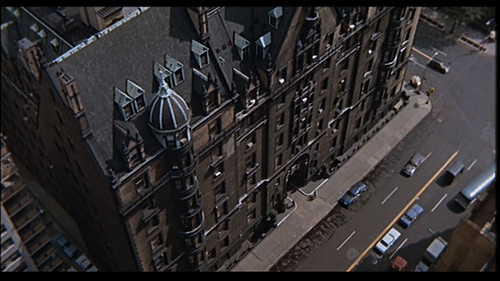Doctor Sleep
by Stephen King
New York: Audioworks
2013
Performed by Will Patton
15 sound discs (18 hours)
I imagine that everyone who likes horror fiction has read The Shining by Stephen King. It is a horror classic, the ultimate "haunted house" book. The story of Danny, his parents, Mr. Hallorann, and the ghouls of the Overlook has given many people nightmares for years, and the movies haven't helped. I have heard that one of the iconic and scariest movie moments is Shelley Duvall's portrayal of Wendy behind the bathroom door, screaming for dear life while her husband, Jack, chops down the door with an ax.
For me, the scariest horror book moment is the vision of the dead woman in the bathtub in Room 217. This is the book I listen to every winter on my long drive home from my job at the library, the snow swirling around me. The story makes my drive seem like a walk in the park compared to what the Torrances are going through.
Needless to say, we have all been wondering and waiting and hoping for a sequel to tell us how Danny turned out after his experiences in the Hotel of Horror. Would Danny ever have the chance of a normal life after seeing the Woman in Room 217, the ghost of Mr. Derwent, and those hedge animals, all at the age of 5? I don't know if anyone of any age would be left unscathed.
What excitement I felt when I heard that Stephen King was writing a sequel to his most famous story! I was one of the first on the library list for the audio book and waited several months for it to be ready. And now that I have finished, the wait was worth it!
Danny is much older. He still has "the shining" but he has been trying to drown it in the bottle, becoming an alcoholic like his father. I was really sadly disappointed that Dan gave in to alcohol, especially having seen what drinking did to his father and mother. But, thinking about it, the problems that he faced then and after were so overwhelming that perhaps it isn't surprising that he would turn to anything that would help him forget. But what sadness for me that he hasn't turned out okay after all!
Danny finds AA meetings and a job as an orderly at a hospice in a small town in New Hampshire. We see that he is lucky in his choice of new homes, since his support system is very strong, and Dan changes his life dramatically. Through his work at the hospital, he becomes known as "Doctor Sleep," invoking the childhood nickname and his use of the shining to help the dying pass on.
Then we meet Abra Stone, a young girl born with a phenomenal shine. She lives nearby and has somehow connected with her mind from a very young age with Dan, even before the two met. Abra becomes the key to Dan's further adventures with horror.
Enter the True Knot, a group of "steam" sucking vampire-like near-immortals. Steam is their term for "the shining" and they travel the country in motor homes, posing as ordinary retired people, seeking children rich in "steam". Once they find these children, they hypnotize them, take them to secluded places, torture them to increase the potency of the steam, and suck it out, killing the child in the end. The children are usually never found again.
This works very well for a long time for the True Knot, until one day when Abra and her incredible "steam" witnesses what they are doing to one of the children, the "baseball boy". To make a long story short and not give away too much, the True Knot discover that she is on to them and also that her steam would be an absolute feast. Abra must outwit characters who have been outwitting humans for centuries, and Dan is called upon to help her.
| The Stanley Hotel in Estes Park, Colorado-- the inspiration for the Overlook Hotel |
The reader of the audiobook was excellent and made the 18-hour listen was worth it.







